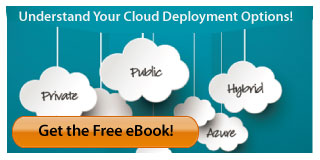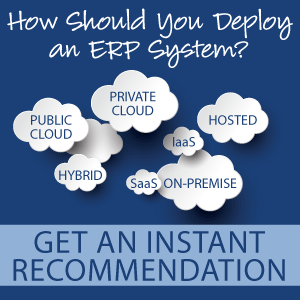ERP On-Demand vs. On-Premise
On-Premise ERP and On-Demand ERP both have their advantages and disadvantages that depend mainly on the unique qualities of your business.
On-Premise ERP and On-Demand ERP both have their advantages and disadvantages that depend mainly on the unique qualities of your business.
Table of Content
The traditional model of ERP deployment is called “on-premises”, but it is no longer the only available option. You can also choose an “on-demand” cloud option for your enterprise resource planning (ERP) software. Both have their advantages and disadvantages, depending on the size, type and scope of your business.
Let’s take a closer look at the differences between the two and what might make one a better fit for your operation than the other.
In this traditional model, you pay for the infrastructure, the hardware, the operating system and underlying software (such as database servers), the ERP software itself, the maintenance and the support. It is up to you to keep all of it going on your servers and workstations, and it is up to you to decide when you want to pay for upgrades. On-premises ERPs can be more common in highly regulated industries, like healthcare and finance, because of this level of control, but that benefit comes with higher costs and the need for an in-house IT team, too.
The benefits of the on-premises model are that you are able to pay for a lot of the expenses upfront, if you have the capital expenditure to handle it. Your ongoing payments are limited to maintenance and support, as well as any infrastructure costs. For a large enterprise, those costs may not be an issue.
Another benefit is total control over how your system is managed, when it is upgraded and how it is implemented. Having control over these aspects means these companies avoid the risk of working with a third party, which is especially concerning if you’re choosing less-established partners.

This model generally refers to any number of cloud ERP subscription models, the most popular being software-as-a-service (SaaS). With on-demand, you often do not need any capital expenditure to pay up front. You instead pay a monthly fee, making it ideal if operational expenditure is all you have at your disposal, which is usually better for small and midsized businesses.
Some of the benefits for On-Demand include not having to pay for any infrastructure, hardware/software maintenance, tech support or any other IT expenses beyond the devices that connect to your ERP system. It’s a much more predictable approach since sudden technical difficulties or interruptions will no longer send you scrambling to pay for support services or a new piece of equipment.
Cloud ERPs are also mobile and accessible from anywhere, making them a great way to add flexibility to your system. Users can access the system from a phone, tablet, computer or some other device. Plus, you do not have to worry about upgrades or new releases, since that is generally handled by the cloud service provider.
The Cloud also offers the opportunity for natural integration with other business systems that on-premises solutions do not. On-Demand ERP solutions like Microsoft Dynamics 365 and NetSuite also include additional business process functionality including CRM, BI, Apps, and Office capabilities within their licensing packages.
One popular ERP is Microsoft Dynamics, which comes in an on-premises version and a cloud version, called Microsoft Dynamics 365. This program is completely configurable to meet your business’s needs with various modules and tools. The benefits are similar to the ones outlined above. The cloud version offers quick implementation, flexibility and a cost-effective monthly price, while the on-premises version provides full control of your data.
Keep in mind that, while some businesses choose the on-premises approach to avoid security risks, Dynamics 365 comes from Microsoft, a company with a stellar reputation for security.
If neither choice sounds perfect for you, there’s also a hybrid option. Hybrid options offer the best features of both cloud and on-premises solutions. We see them most often in critical businesses that need to stay operational at all times, such as hospitals and airlines. Hybrid systems create local caches of data to keep things working for continuous operations.

Choosing a means of deploying an ERP system is unique to each and every business. Based on our extensive experience successfully deploying and supporting ERP systems on-premises, in the cloud, and in hosted environments, we’ve developed a tool that can help you determine which option may be best for you and your organization.
If cost is no concern and you want that total control, on-premises might be best for you. If you are concerned about cost, like most businesses today, and/or may not want to maintain your own infrastructure, on-demand ERP is an excellent option. The skilled professionals at Velosio have experience across all methods, with implementation consultants dedicated to your business’s success. If you are interested in exploring more about on-demand cloud services, request a Cloud Impact Assessment.